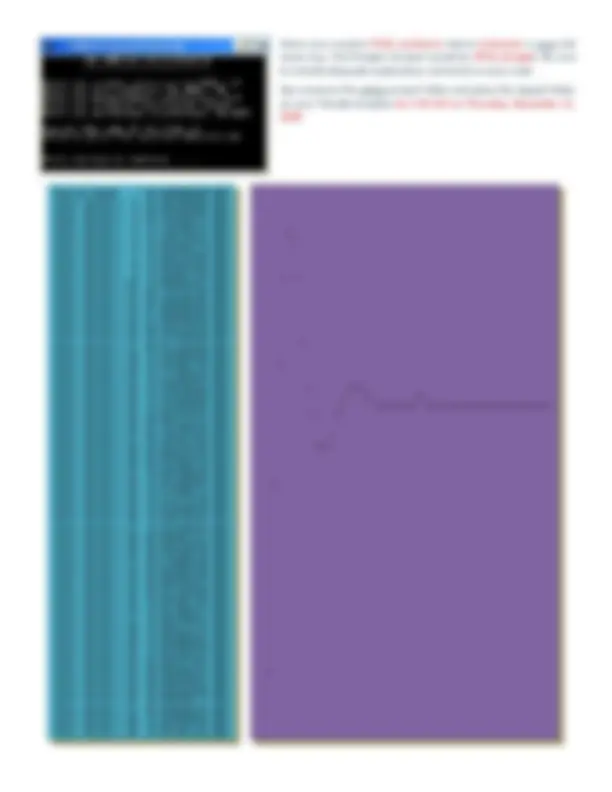



Study with the several resources on Docsity

Earn points by helping other students or get them with a premium plan


Prepare for your exams
Study with the several resources on Docsity

Earn points to download
Earn points by helping other students or get them with a premium plan
Community
Ask the community for help and clear up your study doubts
Discover the best universities in your country according to Docsity users
Free resources
Download our free guides on studying techniques, anxiety management strategies, and thesis advice from Docsity tutors
Information about a programming assignment for computer science students in which they are required to develop a program simulating the application of a proportional-integral-derivative (pid) controller to correct the error between a process variable and a desired setpoint. The concept of pid control, the role of its coefficients, and the steps needed to simulate it. Students are expected to use c++ features and create a class for the pid controller.
Typology: Assignments
1 / 2

This page cannot be seen from the preview
Don't miss anything!


0 t
Initial Speed : 50.0000000000 MPH After Second # 1: 54.0001000000 MPH After Second # 2: 60.0803319995 MPH After Second # 3: 66.4422622371 MPH After Second # 4: 71.7346469473 MPH After Second # 5: 75.1984732624 MPH After Second # 6: 76.6529462778 MPH After Second # 7: 76.3697570495 MPH After Second # 8: 74.8920570026 MPH After Second # 9: 72.8498247155 MPH After Second # 10: 70.8095614237 MPH After Second # 11: 69.1787644190 MPH After Second # 12: 68.1689466482 MPH After Second # 13: 67.8082066353 MPH After Second # 14: 67.9869615695 MPH After Second # 15: 68.5184119440 MPH After Second # 16: 69.1975203686 MPH After Second # 17: 69.8471249168 MPH After Second # 18: 70.3455665286 MPH After Second # 19: 70.6354807760 MPH After Second # 20: 70.7172692943 MPH After Second # 21: 70.6328459975 MPH After Second # 22: 70.4456316890 MPH After Second # 23: 70.2218484856 MPH After Second # 24: 70.0164912094 MPH After Second # 25: 69.8654719734 MPH After Second # 26: 69.7837806464 MPH After Second # 27: 69.7683447602 MPH After Second # 28: 69.8037011269 MPH After Second # 29: 69.8685576240 MPH After Second # 30: 69.9416835726 MPH After Second # 31: 70.0061386282 MPH After Second # 32: 70.0514595991 MPH After Second # 33: 70.0739395775 MPH After Second # 34: 70.0754776758 MPH After Second # 35: 70.0616296236 MPH After Second # 36: 70.0394728451 MPH After Second # 37: 70.0157649422 MPH After Second # 38: 69.9956817314 MPH After Second # 39: 69.9822249626 MPH After Second # 40: 69.9762306748 MPH After Second # 41: 69.9768083496 MPH After Second # 42: 69.9820024186 MPH After Second # 43: 69.9894815675 MPH After Second # 44: 69.9971101968 MPH After Second # 45: 70.0033207406 MPH After Second # 46: 70.0072681374 MPH After Second # 47: 70.0087965527 MPH After Second # 48: 70.0082775743 MPH After Second # 49: 70.0063882267 MPH After Second # 50: 70.0038900509 MPH After Second # 51: 70.0014531344 MPH After Second # 52: 69.9995477007 MPH After Second # 53: 69.9984060237 MPH After Second # 54: 69.9980425947 MPH After Second # 55: 69.9983122000 MPH After Second # 56: 69.9989836774 MPH After Second # 57: 69.9998102122 MPH After Second # 58: 70.0005830823 MPH After Second # 59: 70.0011627370 MPH After Second # 60: 70.0014873398 MPH